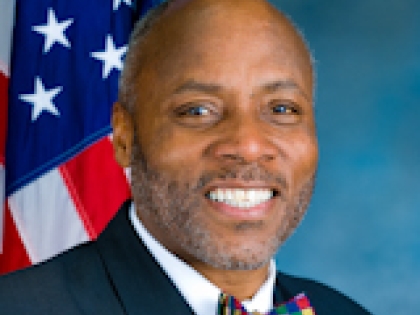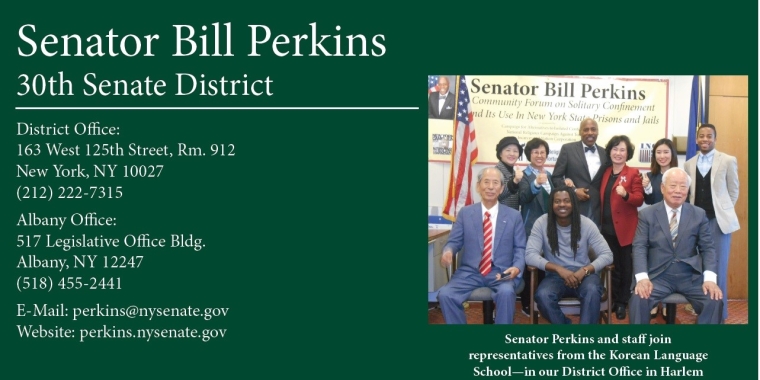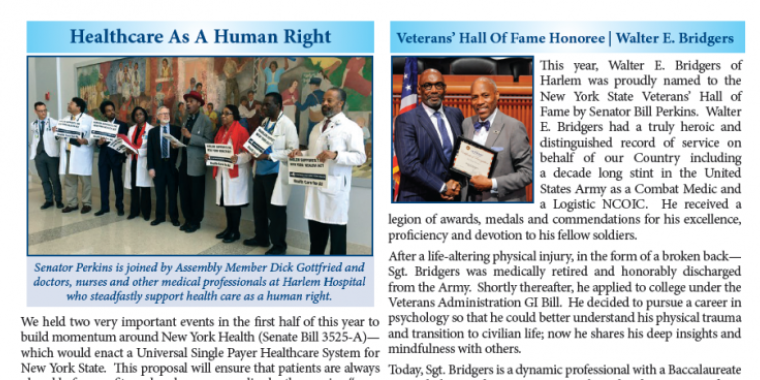
Congestion Pricing’s Effects On Upper Manhattan Debated
Mayor Michael Bloomberg’s hotly debated congestion pricing plan is aimed primarily at reducing traffic in the area of Manhattan below 86th Street. Yet while the focal point of the plan is downtown, its effects would ripple across the city, and local politicians and environmental activists differ dramatically on its ramifications for northern Manhattan.
Hoping to alleviate traffic as well as to reduce pollution and improve mass transit, Mayor Michael Bloomberg unveiled his congestion pricing proposal on Earth Day 2007. Under the proposal, drivers would be charged to enter Manhattan below 86th Street. Such a plan would require the approval of the New York State Legislature. After a round of summer sparring between Bloomberg and legislative leaders, the Legislature has created a commission to develop a new plan to alleviate Manhattan traffic congestion, considering in part Bloomberg’s proposal.
Many elected officials from Morningside Heights and West Harlem have denounced the plan, saying that it will divert traffic into their neighborhoods.
"The mayor tried to jam this down our throats without details," said New York State Senator Bill Perkins, D-West Harlem and Morningside Heights. "It wasn’t simply the aggressive, self-righteous process that the mayor employed; it was the substance as well."
Bloomberg’s press office did not return calls for comment.
Bloomberg’s original congestion pricing plan called for a three-year pilot program in which passenger vehicles would pay $8 each day to enter or leave Manhattan below 86th Street, with the exception of the FDR Drive, the West Side Highway, and West Street, according to the PlaNYC Report on Transportation. Vehicles that travelled through tolled bridges and tunnels would not pay this fee, as round-trip tolls are already $8.
Justin Meyers, district director to City Council member Inez Dickens, D-Morningside Heights and Harlem, stated that Dickens is "opposed to it because essentially if cars are not allowed to enter below 86th Street, a lot will enter the upper part of Manhattan, and parking is already a huge problem in Harlem."
"The so-called solution could turn out to be contributing to the problem, because as it was designed, there was no way to avoid the area above 86th Street from becoming a parking lot and having even more congestion," Perkins said.
But Wiley Norvell, communications director for Transportation Alternatives, a citizen-based New York City group aimed at "sensible transportation," believes congestion pricing would have "huge benefits for northern Manhattan" because "upper Manhattan neighborhoods act as funnels coming into the central business district, so if you reduce overall traffic volumes, you’ll see traffic reduction in those areas as well." Norvell cited a 2006 study conducted by the Partnership for New York City that he said shows that neighborhoods just adjacent to the pricing zone would see a 14 percent reduction in traffic coming through Harlem.
To address concerns about drivers parking their cars in northern Manhattan, Bloomberg proposed the idea of residential parking permits, wherein only residents of northern Manhattan would be allowed to park in those areas after purchasing a city permit. Jeanine Johnson, General Counsel to State Assemblyman Keith Wright, D-West Harlem, said the Assemblyman does not support this idea, saying it would create "private streets" and that "there should be access for everyone."
Norvell said that congestion pricing would not exacerbate the parking problem in Northern Manhattan. He gave the example of a commuter driving into central Manhattan from Westchester, NY, who, he said, would not "drive half an hour into Manhattan, spend another half an hour looking for a parking space in Harlem, and then take mass transit to work. People don’t make their transit sources that way—they take the same kind of transit the entire way."
The impact on air quality that congestion pricing could have in northern Manhattan is also a major concern, especially given record high asthma rates in Harlem. "We believe air emissions will decrease because there will be less idling, and the traffic flow will be a more consistent one," said Peggy Shepard, executive director of the West Harlem Environmental Action group. "We are at such a critical crisis in terms of public health and air quality that we need to try this."
But Meyers, speaking for Councilwoman Dickens, expressed fears that the plan would have the opposite effect, saying that "increased traffic uptown could lead to higher asthma rates." New York State Assemblyman Danny O’Donnell of the 69th Assembly District, which includes parts of Morningside Heights, agreed, saying congestion pricing "will reduce them [asthma rates] inside [the congestion zone] but increase them in the places outside."
Shepard countered these claims, saying, "One thing that you have to remember when you look at air pollution is that it is dynamic and moving. If you understand the nature of air and air quality, you will realize that decreasing pollution in midtown will clean up the air in [northern] Manhattan certainly, and in other locales."
Under Bloomberg’s plan, "the money collected through congestion pricing would raise about $400 million every year" and would be used for mass transit expansion and improvements, according to a fact sheet on congestion pricing released by the mayor’s office.
"We have a real crisis in mass transit, and we need to improve it to unload this burden. Hopefully, this [congestion pricing] will generate the resources towards that end," Perkins said.
Many have expressed concerns that congestion pricing would overload already crowded transit systems, especially in Harlem, and agree on the need for expansion. "The idea that you can discourage one form of transportation without having an impact on the others is simply wrong," O’Donnell said. "All of the solutions mean creating alternatives, which means you have to increase capacity."
"A lot of additional capacity would be added, such as more trains more frequently, which is currently not near capacity," Norvell said. He argued that while congestion pricing would discourage approximately 100,000 people from driving into Manhattan, this number makes up only two percent of transit ridership.
"The huge benefactors of congestion pricing are bus riders," Norvell added. "We can add more buses, but they’ll be stuck in traffic otherwise. We need a strong traffic reduction strategy to make buses more reliable and fast." Bus service, he said, can inexpensively make up for the increase in transit ridership brought about by congestion pricing.
"The communities that are suffering are suffering because of traffic," Perkins said. "So when you talk about congestion pricing, you need to talk about it beginning with what’s healthy for the community. And what’s healthy for the community will translate into what’s healthy for the economy. A healthy economy begins with a healthy.



